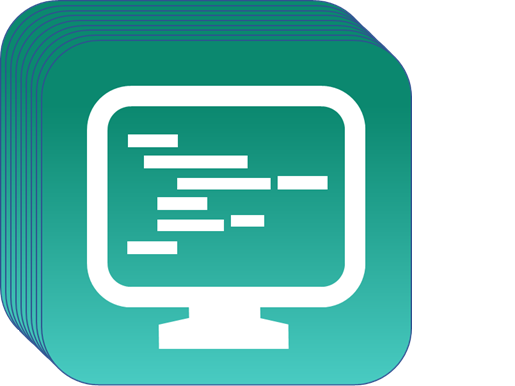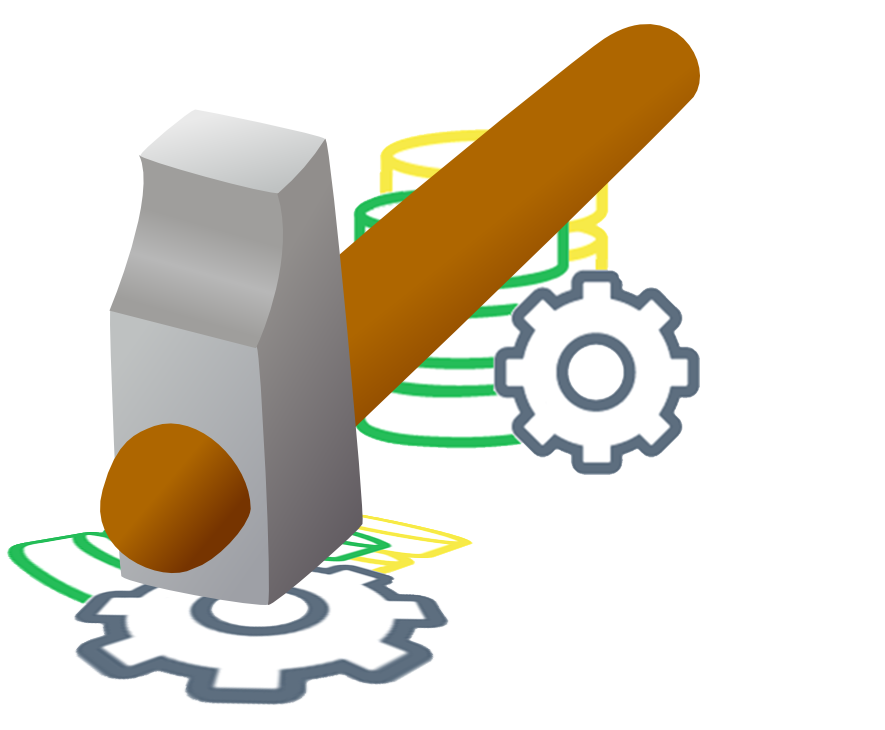 The last few years have seen some chatter around the topic of “lights-out project management” which is an idea referring to the automation of tasks, particularly through the use of AI (Artificial Intelligence), so that human intervention is not required. Ideally, of course, allowing project managers to concentrate their efforts on other, more productive and value-added activities. The goal of reducing the time spent on administrative tasks is nothing new and some attempts to achieve this can be more of a false economy because of the “hidden” technical restrictions under the hood of the tools used.
The last few years have seen some chatter around the topic of “lights-out project management” which is an idea referring to the automation of tasks, particularly through the use of AI (Artificial Intelligence), so that human intervention is not required. Ideally, of course, allowing project managers to concentrate their efforts on other, more productive and value-added activities. The goal of reducing the time spent on administrative tasks is nothing new and some attempts to achieve this can be more of a false economy because of the “hidden” technical restrictions under the hood of the tools used.
Category: Studio Tips
Quick tips on how to do things in Studio
The versatile regex based text filter in Trados Studio…
 After attending the xl8cluj conference in Romania a few weeks ago, which was an excellent, and very technical conference for translators, I thought it was about time I wrote an article around the things you can do with the Regular Expression Delimited Text filter since it is so useful for solving all kinds of tasks related to text based files that don’t fit any of the out of the box formats available in the product. Files such as software string files and csv files are common examples of where understanding how to work with this customisable file type can yield many benefits. So this article is food for thought and a few things that might be helpful to you in the future. It’s also pretty long (I’m not kidding!), so maybe grab a cup of coffee before you start to go through it!
After attending the xl8cluj conference in Romania a few weeks ago, which was an excellent, and very technical conference for translators, I thought it was about time I wrote an article around the things you can do with the Regular Expression Delimited Text filter since it is so useful for solving all kinds of tasks related to text based files that don’t fit any of the out of the box formats available in the product. Files such as software string files and csv files are common examples of where understanding how to work with this customisable file type can yield many benefits. So this article is food for thought and a few things that might be helpful to you in the future. It’s also pretty long (I’m not kidding!), so maybe grab a cup of coffee before you start to go through it!
Continue reading “The versatile regex based text filter in Trados Studio…”
The “Old Farts Language Code Club”…
 The Old Farts Language Code Club! This is a new club, inspired by a comment in the SDL Community from a prospective member. I’m not sure yet of the age at which you can qualify for membership, but in addition to the age requirements, which may have stringent rules to prevent any young whippersnappers from joining, it’s essential that prospective members have a good grasp of the language codes used in Trados Studio. I’m also not sure of the demand, so I may open a waiting list that could include anyone who already makes good use of the language codes in Trados Studio but isn’t an old fart yet!
The Old Farts Language Code Club! This is a new club, inspired by a comment in the SDL Community from a prospective member. I’m not sure yet of the age at which you can qualify for membership, but in addition to the age requirements, which may have stringent rules to prevent any young whippersnappers from joining, it’s essential that prospective members have a good grasp of the language codes used in Trados Studio. I’m also not sure of the demand, so I may open a waiting list that could include anyone who already makes good use of the language codes in Trados Studio but isn’t an old fart yet!
Radical Anxiety Termination…
 … Really Awful Tucker, Radically Altered Terminology, Rheumatoid Arthritis Test, Race Against Time, Recurrent Acute Tonsillitis, Real Acquisition Technology, Republicans Against Trump… the list goes on! All with the same acronym RAT. A comment on the SDL AppStore this week relating to a new plugin called the RAT inspired me to write this article this evening. Everyone is loving this plugin so far but one user had an objection to the name, the acronym, because he didn’t get it. Actually to be fair someone else on the SDL Community didn’t like it either… Rats are dirty! Continue reading “Radical Anxiety Termination…”
… Really Awful Tucker, Radically Altered Terminology, Rheumatoid Arthritis Test, Race Against Time, Recurrent Acute Tonsillitis, Real Acquisition Technology, Republicans Against Trump… the list goes on! All with the same acronym RAT. A comment on the SDL AppStore this week relating to a new plugin called the RAT inspired me to write this article this evening. Everyone is loving this plugin so far but one user had an objection to the name, the acronym, because he didn’t get it. Actually to be fair someone else on the SDL Community didn’t like it either… Rats are dirty! Continue reading “Radical Anxiety Termination…”
Santa’s little helper…
 Santa’s little helper… and if any of you are fans of “The Simpsons” I’m not talking about a greyhound… is a xmas gift from the SDL Community and SDL AppStore teams to make it easier to get help when you’re working in SDL Trados Studio. The SDL Community has become incredibly busy in the last few years, so on the whole I’m confident people have learned how to find where to post and navigate through the myriad of forums available to them. Certainly we have some good short links and I have written about the communities before:
Santa’s little helper… and if any of you are fans of “The Simpsons” I’m not talking about a greyhound… is a xmas gift from the SDL Community and SDL AppStore teams to make it easier to get help when you’re working in SDL Trados Studio. The SDL Community has become incredibly busy in the last few years, so on the whole I’m confident people have learned how to find where to post and navigate through the myriad of forums available to them. Certainly we have some good short links and I have written about the communities before:
The Story of “Studio” Colours…
 Once upon a time, of course, the translation environment was just black and white with gray in between. Black and white and gray? The AppStore gods were understandably bored and angry, so they went looking for other colours to brighten the world for their users. The resulting colours emerged from the Microsoft Word palette resulting in fifteen colours to choose from. The AppStore gods were so happy with these colours they decided to paint the translation environment from the AppStore. They opened Visual Studio and flung the colours around, resulting in a brand new app. they called “Wordlight” and a new colourful feature for the “Community Advanced Display Filter”.
Once upon a time, of course, the translation environment was just black and white with gray in between. Black and white and gray? The AppStore gods were understandably bored and angry, so they went looking for other colours to brighten the world for their users. The resulting colours emerged from the Microsoft Word palette resulting in fifteen colours to choose from. The AppStore gods were so happy with these colours they decided to paint the translation environment from the AppStore. They opened Visual Studio and flung the colours around, resulting in a brand new app. they called “Wordlight” and a new colourful feature for the “Community Advanced Display Filter”.
Who’s up for a little bit of Passolo?
 I can remember being asked in early 2007 to organise a report on the benefits of Passolo compared to other tools that also supported visual software localization. In the same year, shortly after that, SDL purchased Pass Engineering and SDL Passolo was born. At the time I didn’t know a lot about Trados Workbench or SDLX either as I had a very different role, and I only started getting interested in the technology we (and our competitors) use in 2008 just prior to the release of SDL Trados Studio 2009 the following year. In all that time since then, until a few months ago, I’m ashamed to say I’ve never taken more than a cursory look at it. It’s taken a course I’m doing at the moment at the University of Strasbourg to really bring home the value. One of the modules on this course is “Localization of Graphical User Interfaces” and under some expert tutorage I’m plugging many of the gaps I have in my knowledge of this industry. I’m even putting it to good use in my daily work!
I can remember being asked in early 2007 to organise a report on the benefits of Passolo compared to other tools that also supported visual software localization. In the same year, shortly after that, SDL purchased Pass Engineering and SDL Passolo was born. At the time I didn’t know a lot about Trados Workbench or SDLX either as I had a very different role, and I only started getting interested in the technology we (and our competitors) use in 2008 just prior to the release of SDL Trados Studio 2009 the following year. In all that time since then, until a few months ago, I’m ashamed to say I’ve never taken more than a cursory look at it. It’s taken a course I’m doing at the moment at the University of Strasbourg to really bring home the value. One of the modules on this course is “Localization of Graphical User Interfaces” and under some expert tutorage I’m plugging many of the gaps I have in my knowledge of this industry. I’m even putting it to good use in my daily work!
Audio Visual Translation in Studio
 When I started to look at the subtitling industry little did I know just how fragmented it would be! For years we have talked about SRT and yet when I look at the filetypes that tools like Subtitle Edit claim to support I find over 200! Normally I’m not a big fan of standards but that’s probably because I live in a world where there is little variation and supporting different bilingual files is trivial in comparison. But if there was ever a good argument for one it would be here! Asking people what format they see most often does help to narrow it down, but as we often find when developing software, the interest usually comes after the event and not before! So what formats can a translation tool support today?
When I started to look at the subtitling industry little did I know just how fragmented it would be! For years we have talked about SRT and yet when I look at the filetypes that tools like Subtitle Edit claim to support I find over 200! Normally I’m not a big fan of standards but that’s probably because I live in a world where there is little variation and supporting different bilingual files is trivial in comparison. But if there was ever a good argument for one it would be here! Asking people what format they see most often does help to narrow it down, but as we often find when developing software, the interest usually comes after the event and not before! So what formats can a translation tool support today?
Apply a TM Template
 Ever since the release of Studio 2009 we have had the concept of Language Resource Templates, and ever since the release of Studio 2009 I’d risk a bet that most users don’t know what they’re for or how to use them. To be fair this is hardly a surprise since their use is actually quite limited out of the box and access to the goodies inside is pretty hard to get at. It’s been something I used to see users complain about a long time ago but for some years now I rarely see them mentioned anymore. This article, I hope, might change that.
Ever since the release of Studio 2009 we have had the concept of Language Resource Templates, and ever since the release of Studio 2009 I’d risk a bet that most users don’t know what they’re for or how to use them. To be fair this is hardly a surprise since their use is actually quite limited out of the box and access to the goodies inside is pretty hard to get at. It’s been something I used to see users complain about a long time ago but for some years now I rarely see them mentioned anymore. This article, I hope, might change that.
Wot! No target!!
 The origin of Chad (if you’re British) or Kilroy (if you’re American) seems largely supposition. The most likely story I could find, or rather the one I like the most, is that it was created by the late cartoonist George Edward Chatterton ‘Chat’ in 1937 to advertise dance events at a local RAF (Royal Air Force) base. After that Chad is remembered for bringing attention to any shortages, or shortcomings, in wartime Britain with messages like Wot! No eggs!!, and Wot! No fags!!. It’s not used a lot these days, but for those of us aware of the symbolism it’s probably a fitting exclamation when you can’t save your target file after completing a translation in Trados Studio! At least that would be the polite exclamation since this is one of the most frustrating scenarios you may come across!
The origin of Chad (if you’re British) or Kilroy (if you’re American) seems largely supposition. The most likely story I could find, or rather the one I like the most, is that it was created by the late cartoonist George Edward Chatterton ‘Chat’ in 1937 to advertise dance events at a local RAF (Royal Air Force) base. After that Chad is remembered for bringing attention to any shortages, or shortcomings, in wartime Britain with messages like Wot! No eggs!!, and Wot! No fags!!. It’s not used a lot these days, but for those of us aware of the symbolism it’s probably a fitting exclamation when you can’t save your target file after completing a translation in Trados Studio! At least that would be the polite exclamation since this is one of the most frustrating scenarios you may come across!
At the start of this article I fully intended this to be a simple description of the problems around saving the target file, but like so many things I write it hasn’t turned out that way! But I found it a useful exercise so I hope you will too. So, let’s start simple despite that introduction because the reasons for this problem usually boil down to one or more of these three things:
- Not preparing the project so it’s suitable for sharing
- Corruption of a project file
- A problem with the source file or the Studio filetype
